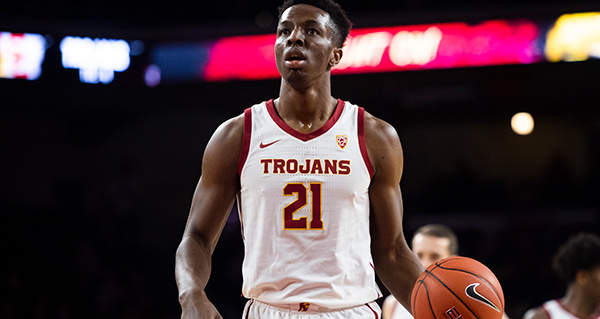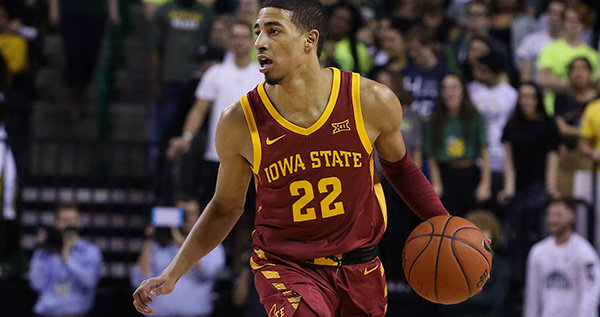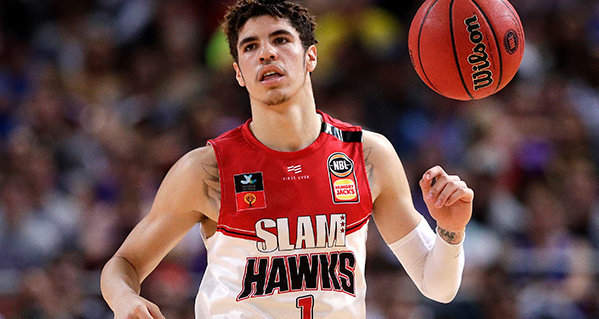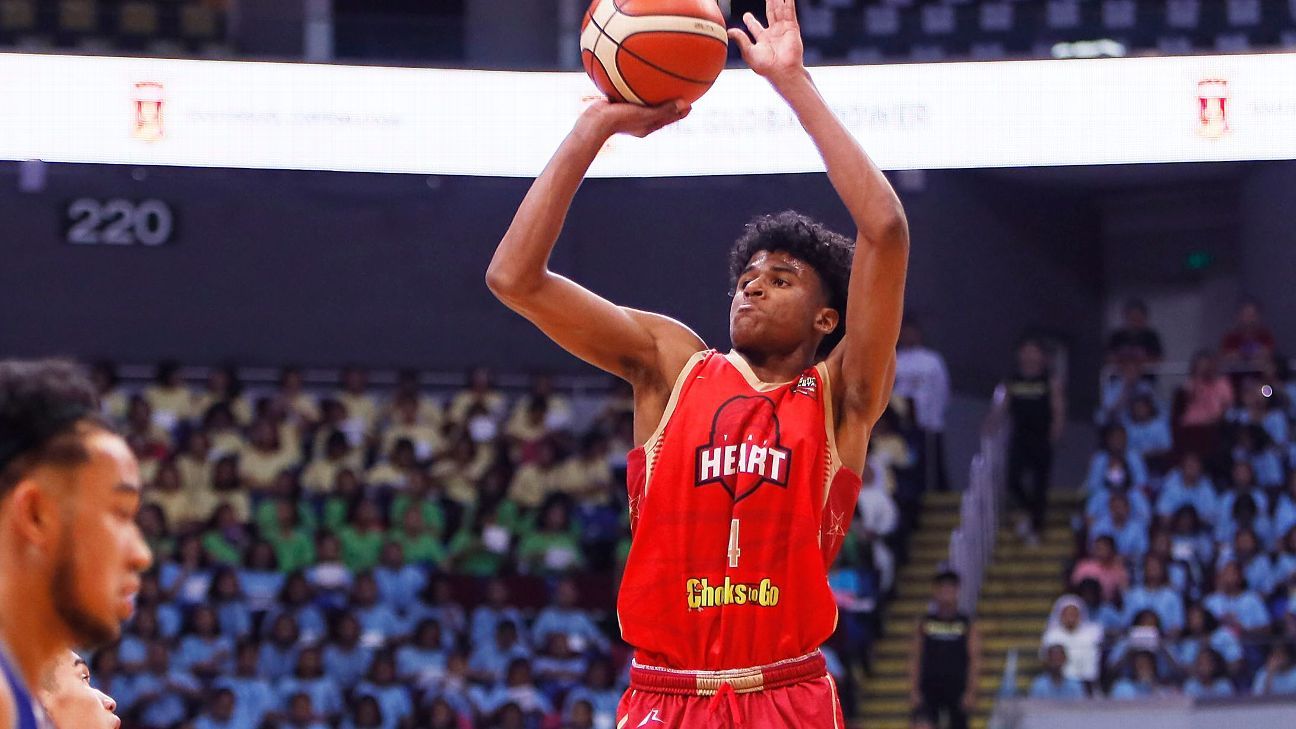Passing
Ball has assisted on 36.9% of Illawarra’s scores when he’s been on the floor this season - which ranks second in the league.
He is the primary ball handler on the team, especially after Aaron Brooks tore his Achilles a few weeks ago – responsible for pushing the ball up the court in transition, Initiating actions in the halfcourt and running middle high pick-and-roll when things bog down late in the shot clock.
His court vision is his most impressive skill at this point of his development, which is made evident through his long outlet passes and his advanced reads off a ball-screen.
Ball can see over smaller defenders on the move and in traffic thanks to his six-foot-five height
[4]. He’s shown good patience manipulating his defender into re-screens and proven himself capable of hitting the roll man over the top consistently, besides launching hook passes against the momentum of his body to the opposite corner with either hand quite aggressively.
The cost of that aggressiveness as a shot creator for others is that Ball turns the ball over quite a bit as well as he’s averaged 3.2 giveaways per 40 minutes.
But the positives of his frequent attempts to thread the needle and the flair with which he plays mostly outweigh the negatives, as Ball has also impressed with the timing of his deliveries on pocket passes, behind-the-back bounce feeds to the roll man, lobs, drop-offs and skip passes to big men in the pick-and-pop.
Scoring
His scoring is not as far along as his passing.
His 21.9 points per 40 minutes are coming on 20.7 field goal attempts and 4.9 free throw attempts per 40 minutes.
Ball does most of his work in middle high pick-and-roll. He has a tight handle and good feel for manipulating his defender into the ball-screen but doesn’t have an explosive first step or particularly impressive speed attacking downhill.
He can go up with some power off momentum if left unchallenged on his path to the rim, but is generally not an explosive leaper off one foot in traffic.
His finishing package is promising. Ball can hang and adjust his body in the air, is flexible enough to double clutch mid-flight, flashes his left hand as an asset on scoop finishes from time-to-time, shows impressive touch on right-handed finger roll finishes, leverages his length on extended finishes, unleashed a wrong foot-wrong hand layup at one point, and gets to the foul line a fair amount.
He doesn’t blow by his man one-on-one all that often, unless he gets a big on a switch and that guy completely bites on his hesitation move or his crossover. And though he does quite a bit of dancing with the ball, Ball has also shown only so-so shiftiness for the most part.
But he is pretty resourceful in his attempts to attack in isolation – able to go to a sick in-and-out dribble to get his defender to take a false step, maintain his balance through contact despite his lean 190-pound frame in the context of his height and pivot into a well-coordinated spin move to get into the lane.
Ball doesn’t get to the basket as much as he could, though.
Part of it is that he isn’t all that fast with the ball. Another part of it is that his team doesn’t offer him all that many clean driving lanes by tying up the help. Another part is that Ball has shown a strong preference for relying on his runner – most often seeming more comfortable snaking the pick-and-roll into setting up a floater rather than getting downhill on a straight line drive or turning the corner to get all the way to the goal or rising for an elbow pull-up.
And it has not proven to be a winning formula, as he’s shot just 46.4% on two-pointers so far.
Ball has also been a poor pull-up shooter, so opponents are not incentivized to try running him off his shot. Ball sets an unorthodox base and goes through unorthodox mechanics in his jumpers – a two-hand shot, released from in front of his face.
He has taken a few side-step pull-ups from time-to-time and his jumper off going between the legs in a pinch can look pretty sleek but it’s rare to see him attempt a step-back jump-shot or managing to create separation and elevating comfortably while going to his left. Ball also needs to get great elevation in order to shoot over contests, given the launch point of his low release.
If he can get his shot off uncontested, Ball has proven he is a capable shot maker, even from deep NBA range. But he’s shot just 27.9% from three-point range so far this season, at a pace of 8.4 such attempts per 40 minutes.
Ball tends to be a more reliable shooter off the ball, with his feet set. He has a quick trigger due to compact mechanics and gets a good arc on his spot-up three-pointers.
But, while he’s taken a few shots sprinting to the ball for hand-offs, it’s unclear for now if Ball can offer versatility as a shooter on the move.
Prospect Report LaMelo Ball Of The Illawarra Hawks - RealGM Analysis
basketball.realgm.com
 nbadraft.theringer.com
nbadraft.theringer.com






